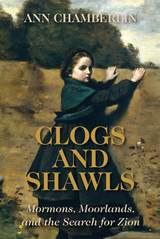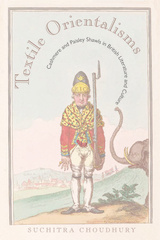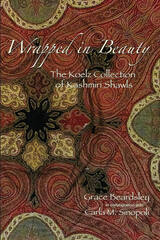3 books about Shawls

Clogs and Shawls
Mormons, Moorlands, and the Search for Zion
Ann Chamberlin
University of Utah Press, 2019
In this revealing family memoir, best-selling author Ann Chamberlin explores the history of her Mormon grandmother Frances Lyda and her seven sisters who grew up desperately poor in Bradford, Yorkshire, in the early years of the twentieth century. Chamberlin’s narrative follows these eight daughters of Mary Jane Jones and Ralph Robinson Whitaker, a remarkably gifted yet poor and blind piano tuner. Most of the girls were forced by necessity to abandon school at age twelve and find work in terrible conditions at a local factory. When their mother converted to the Church of Jesus Christ of Latter-day Saints in 1901, she became the backbone of the Mormon community in Yorkshire. Her daughters followed their mother into her faith, while navigating their own, sometimes tragic, ways into adulthood, family, and the world beyond industrial England. Though they were exploited and undereducated, the girls maintained a steadfast belief in a brighter future for the Mormon faithful, a mindset that, despite their many differences, forged an unshakable togetherness between them. All gifted and strong individuals in their own right, many of the Whitaker sisters overcame long odds and incredible hardships to carry on and prosper in Salt Lake City.
Chamberlin interviewed her grandmother and six of her surviving great-aunts for Clogs and Shawls, the relatives who had made their way to Mormon Zion. She weaves novelistic passages with their first-person narratives to create a singular work of oral immigrant family history that is both lively and revealing.
Chamberlin interviewed her grandmother and six of her surviving great-aunts for Clogs and Shawls, the relatives who had made their way to Mormon Zion. She weaves novelistic passages with their first-person narratives to create a singular work of oral immigrant family history that is both lively and revealing.
[more]

Textile Orientalisms
Cashmere and Paisley Shawls in British Literature and Culture
Suchitra Choudhury
Ohio University Press, 2023
The first major study of Cashmere and Paisley shawls in nineteenth-century British literature, this book shows how they came to represent both high fashion and the British Empire. During the late eighteenth century, Cashmere shawls from the Indian subcontinent began arriving in Britain. At first, these luxury goods were tokens of wealth and prestige. Subsequently, affordable copies known as “Paisley” shawls were mass-produced in British factories, most notably in the Scottish town of the same name. Textile Orientalisms is the first full-length study of these shawls in British literature of the extended nineteenth century. Attentive to the juxtaposition of objects and their descriptions, the book analyzes the British obsession with Indian shawls through a convergence of postcolonial, literary, and cultural theories. Surveying a wide range of materials—plays, poems, satires, novels, advertisements, and archival sources—Suchitra Choudhury argues that while Cashmere and Paisley shawls were popular accoutrements in Romantic and Victorian Britain, their significance was not limited to fashion. Instead, as visible symbols of British expansion, for many imaginative writers they emerged as metaphorical sites reflecting the pleasures and anxieties of the empire. Attentive to new theorizations of history, fashion, colonialism, and gender, the book offers innovative readings of works by Sir Walter Scott, Wilkie Collins, William Thackeray, Frederick Niven, and Elizabeth Inchbald. In determining a key status for shawls in nineteenth-century literature, Textile Orientalisms reformulates the place of fashion and textiles in imperial studies. The book’s distinction rests primarily on three accounts. First, in presenting an original and extended discussion of Cashmere and Paisley shawls, Choudhury offers a new way of interpreting the British Empire. Second, by tracing how shawls represented the social and imperial experience, she argues for an associative link between popular consumption and the domestic experience of colonialism on the one hand and a broader evocation of texts and textiles on the other. Finally, discussions about global objects during the Victorian period tend to overlook that imperial Britain not only imported goods but also produced their copies and imitations on an industrial scale. By identifying the corporeal tropes of authenticity and imitation that lay at the heart of nineteenth-century imaginative production, Choudhury’s work points to a new direction in critical studies.
[more]

Wrapped in Beauty
The Koelz Collection of Kashmiri Shawls
Grace Beardsley in collaboration with Carla M. Sinopoli
University of Michigan Press, 2005
This richly illustrated volume examines the remarkable Kashmiri shawls of the Walter Koelz Collection of the University of Michigan Museum of Anthropological Archaeology. Part I presents the history, production, forms, and ornamentation of Kashmiri shawls, focusing on the impact of social contexts and the advent of the Jacquard loom on shawl development. Part II is a detailed descriptive catalogue of the shawls in the Koelz Collection. An accompanying CD-ROM includes color illustrations of the shawls in the collection as well as a transcribed manuscript by Koelz.
[more]
READERS
Browse our collection.
PUBLISHERS
See BiblioVault's publisher services.
STUDENT SERVICES
Files for college accessibility offices.
UChicago Accessibility Resources
home | accessibility | search | about | contact us
BiblioVault ® 2001 - 2024
The University of Chicago Press









